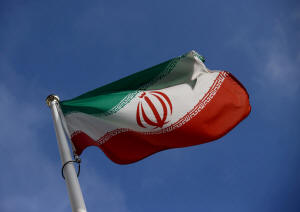Iran says it tests satellite-carrying rocket, U.S. calls move 'destabilising'
 Send a link to a friend
Send a link to a friend
 [November 07, 2022]
DUBAI (Reuters) -Iran's
Revolutionary Guards tested a new satellite-carrying rocket on Saturday,
state media reported, a move the United States called "unhelpful and
destabilising". [November 07, 2022]
DUBAI (Reuters) -Iran's
Revolutionary Guards tested a new satellite-carrying rocket on Saturday,
state media reported, a move the United States called "unhelpful and
destabilising".
Washington fears the same long-range ballistic technology used to put
satellites into orbit could also be used to launch nuclear warheads.
Tehran has regularly denied having any such intention.
"The flight test of this satellite carrier with a solid-fuelled engine
... was successfully completed," state news agency IRNA reported.
The Ghaem 100, Iran's first three-stage launch vehicle, will be able to
place satellites weighing 80 kg (180 pounds) in an orbit 500 km (300
miles) from the earth's surface, IRNA said.
Amirali Hajizadeh, head of the Revolutionary Guards' aerospace division
which developed the Ghaem 100, said the rocket would be used to launch
Iran's Nahid satellite for the telecommunications ministry, state media
reported.

Saturday's operation tested the first sub-orbital stage of the rocket,
the reports said.
In an emailed response to the Iranian announcement, a spokesperson for
the U.S. State Department said: "Such actions are unhelpful and
destabilising."
"The United States remains concerned with Iranís continued development
of space launch vehicles (SLVs), which pose a significant proliferation
concern," the spokesperson said.
"SLVs incorporate technologies that are virtually identical to, and
interchangeable with, those used in ballistic missiles, including
longer-range systems."
The official said launches of SLVs "defy United Nations Security Council
Resolution (UNSCR) 2231, which calls upon Iran not to undertake any
activities related to ballistic missiles 'designed to be capable of
delivering nuclear weapons, including launches using such ballistic
missile technology.'"
Washington "continues to use a variety of non-proliferation tools,
including sanctions, to counter the further advancement of Iranís
ballistic missile program and its ability to proliferate missiles and
related technology to others," the spokesperson added.
[to top of second column]
|

The Iranian flag waves in front of the
International Atomic Energy Agency (IAEA) headquarters, before the
beginning of a board of governors meeting, in Vienna, Austria, March
1, 2021. REUTERS/Lisi Niesner/File Photo

Iran, which has one of the biggest missile programmes in the Middle
East, has had several failed satellite launches in the past few
years, blamed on technical issues.
The 2015 U.N. resolution called on Iran to refrain for up to eight
years from work on ballistic missiles designed to deliver nuclear
weapons following an agreement with six world powers.
Iran says it has never pursued the development of nuclear weapons
and, therefore, the resolution does not apply to its ballistic
missiles, which Tehran had described as an important deterrent and
retaliatory force.
Then-President Donald Trump pulled the United States out of the
nuclear deal in 2018. President Joe Biden's administration had been
seeking to negotiate Iran's return to the pact but recently said it
had set aside diplomacy for now because it said Tehran had supplied
drones to Russia for use in its war against Ukraine.
Iran acknowledged for the first time on Saturday that it had
supplied Moscow with drones but said they were sent before the war
in Ukraine, where Russia has used them to target power stations and
civilian infrastructure. Ukrainian President Volodymyr Zelenskiy
accused Tehran of lying, saying Kyiv's forces were downing at least
10 of the unmanned aerial vehicles every day.
(Reporting by Dubai newsroom; Additional reporting by David
Brunnstrom in Washington; Editing by Toby Chopra, Andrew Heavens and
William Mallard)
[© 2022 Thomson Reuters. All rights
reserved.]
This material may not be published,
broadcast, rewritten or redistributed.
Thompson Reuters is solely responsible for this content.
 |